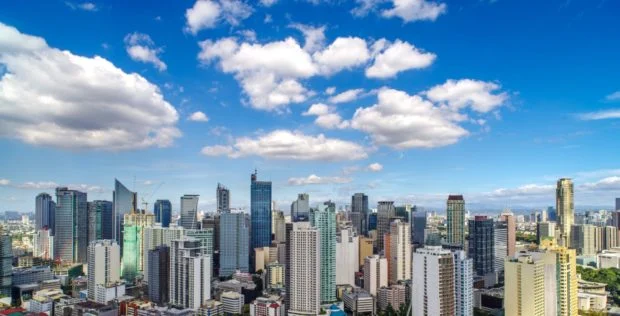Time to get real (estate) in fighting inflation
BY Inquirer.net
• 5 minutes min. read
In a span of just one month, the Philippines’ annual inflation rate climbed to 6.1 percent in June, from 5.4 percent in May, according to the Philippine Statistics Authority (PSA). Based on PSA statistics, this is the highest level of inflation since October 2018, exceeding market consensus of 5.9 percent. It goes without saying that the prices of prime commodities went up as well.

In a span of just one month, the Philippines’ annual inflation rate climbed to 6.1 percent in June, from 5.4 percent in May, according to the Philippine Statistics Authority (PSA).
Based on PSA statistics, this is the highest level of inflation since October 2018, exceeding market consensus of 5.9 percent. It goes without saying that the prices of prime commodities went up as well.
In a span of just one month, the Philippines’ annual inflation rate climbed to 6.1 percent in June, from 5.4 percent in May, according to the Philippine Statistics Authority (PSA).
Based on PSA statistics, this is the highest level of inflation since October 2018, exceeding market consensus of 5.9 percent. It goes without saying that the prices of prime commodities went up as well.

Inflation does not only mean a rise in the general level of prices for goods and services. It also means the purchasing power of the peso is falling.
People are losing value for their money, instead of growing it, even without doing anything by simply holding on to it.
Inflation and Real Estate
In inflationary times, foreign and local financial gurus are almost unanimous in suggesting that investment in real estate may be one of the best ways to preserve and raise the value of the currency.
Mark P. Cussen, writing for Investopedia, acknowledged, “Inflation is a natural occurrence in an economy, but inflation hedging can be used to offset the anticipated drop in a currency’s price, thus protecting the decreased purchasing power.” Inflation hedging, he said, could help protect the value of an investment.
“It often acts as a good inflation hedge since there will always be a demand for homes, regardless of the economic climate, and because as inflation rises, so do property values . . .” - Mark P. Cussen
Colin Lizieri, an economist and professor of real estate finance at the University of Cambridge, said in a Bloomberg Asia Edition article, “On average, housing prices across a longer time span, such as 100 years, have kept up with the rate of inflation — even outstripping it by 2 percent or 3 percent in developed economies.”
According to Dan Weil, although real estate investment was also struggling in the United States because of inflation, investors still viewed real estate as a good hedge against inflation.
This was affirmed, he said, by a Deutsche Bank survey of more than 560 investors. The bank asked which asset the respondents “would most want to buy and hold” during an inflationary period. Property was the number one choice with 43 percent of the respondents choosing it over second-placer developed-market equities (33 percent).
Patrick Grimes, a Forbes Councils Member, Forbes Business Council, wrote in Forbes magazine, “When it comes to investing for your future, considering the effects of inflation on your assets can help you mitigate inflation before it drains the purchasing power in your retirement accounts.”
The founder of Invest on Main Street, a private equity firm managing passive multifamily investments in emerging markets, said it would be an even better hedge against inflation if people invested in real estate that would earn a regular income.
“By investing in income-generating real estate, you can hedge your bets against inflation and protect your retirement dollars long-term,” - Patrick Grimes
Philippine Real Estate Investments
Many Filipino finance and investment people share the views expressed by these foreign experts on the value of real estate as a hedge against inflation.
As Inquirer Business columnist Henry Ong wrote recently, real estate would be a strong inflation hedge because it would protect an investment from losing its value due to the peso’s declining purchasing power.
Real estate, he pointed out, had kept pace with and maintained their values during inflationary times.
And, as Grimes suggested, property investments could help generate income. People could make their money earn more by buying real estate that they did not need for themselves and renting or leasing it out. With the economy gradually and steadily opening up and schools resuming face-to-face classes, it is expected that the demand for real estate and rental properties will increase.
This is to be expected as commuting for both workers and students remain a major difficulty, sometimes causing them to spend two to four hours on the road. Public utility vehicles are not enough to meet the demand and traffic jams are starting to become a regular occurrence again.
Real Estate Value in The Philippines
Property values keep pace with inflation over time despite the rise in the prices of construction materials and supplies and other expenses. Thus, investing in property protects the value of the investor’s money from the decline in purchasing power caused by inflation.
For overseas Filipino workers (OFWs), this is a particularly good time to protect and grow their hard-earned money by buying Philippine real estate at the current peso to dollar exchange rate.
As the Philippine economy moves to get past the havoc caused by Covid-19, many developers are offering attractive payment terms to support the recovery of the industry.
It is the best time for investors to put their money into something that will weather current and future inflationary situations and capitalize on the recovery of the property sector.


Property Investment in The Philippines
When looking for property investment, location is one of the key considerations they must look into. It must be able to provide accessibility, comfort, completeness, and convenience.
SMDC properties are known for their prime locations. They are situated beside or in close proximity to SM Malls, and most of its properties also have their own lifestyle establishments in the development, making it easy for property owners and tenants to have access to life’s necessities, to a slew of dining, retail and entertainment options. More so, SMDC communities are near business districts, major thoroughfares, and transport hubs, providing access to everything that is essential, and, in turn, helping people save travel time. Good examples of this are SMDC’s Light Residences and Fame Residences, which are connected or just a few meters away from the MRT-Boni station.
Being one of the most trusted property developers, SMDC makes it possible for more Filipinos to live their best lives with its properties’ hotel-like lobbies and concierge services, world-class amenities, and of course excellent property management.
With its reasonable price and attractive payment terms, SMDC properties not only allow you to experience a luxurious lifestyle, but also lets you own a sustainable investment that can protect and grow the value of their money.